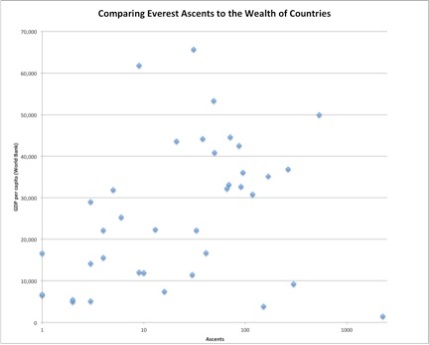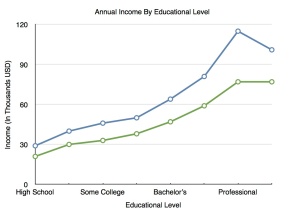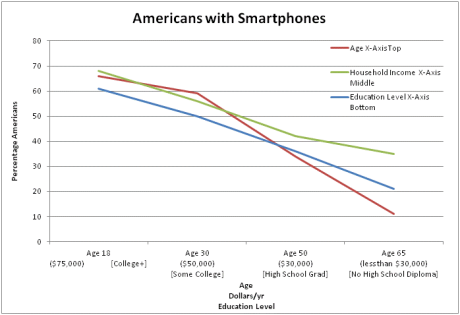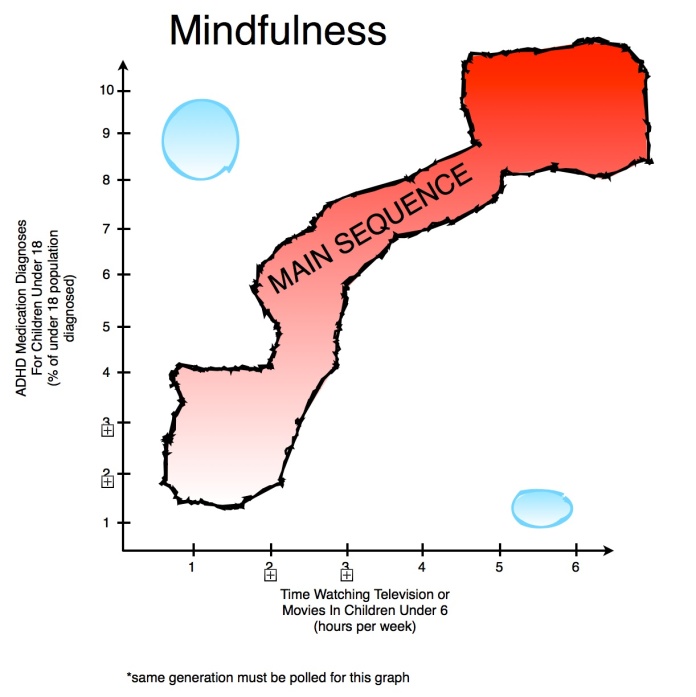A train of thought led by the following articles:
http://www.nature.com/news/did-a-hyper-black-hole-spawn-the-universe-1.13743
http://www.pbs.org/wgbh/nova/next/physics/collapsing-4-d-star-could-have-spawned-universe/
http://phys.org/news/2013-09-goodbye-big-black-hole-theory.html

What you are looking at is a four-dimensional black hole, theorized for a decade or so now (although just recently gaining popularity) to be the origin of our universe.
Now I know what you may be thinking: Who? What? When? Where? How?
To understand this creation theory, we must first take a look at black holes in our own three dimensions we know and love:

The black holes formed from our three-dimensional stars are summed up nicely in the diagram, above. The area around a 3D black hole where the escape velocity is equal to the speed of light is the event horizon, a seemingly two-dimensional surface. Once past the even horizon, one must travel faster than the speed of light to escape. Since that is not possible, the boat in the diagram would fall infinitely towards a singularity (assuming it had magical powers that prevented it from being torn apart on its journey down).
Though is that singularity truly infinite? Or, as string theorists suggest, is this singularity in the shape of a loop, putting a limit to this infinity? A loop that may be a doorway to something else… A loop maintains our 2D image of the black hole.
The “loop” idea seems absurd though let us now picture a four-dimensional black hole (like in the first picture). If a 3D black hole has a seemingly 2D event horizon, then a 4D black hole should have a 3D event horizon.
What is the point?
The theory in question suggests that the expanding event horizon of a 4D black hole is our own expanding universe.
Where is the proof?
This theory accounts for something physicists have been trying to figure out for a while, now. The uniform temperature of the cosmos would take far longer to equalize than its existence. Therefore, a theory suggesting we are a product of a longer existing universe would give us the time needed for equalization to occur.
What is the proof against it?
A 4% calculation mismatch with some new data.
Proof? Ha! This is theoretical physics we’re talking about…
So along those lines, I will leave with the product of my imagination as a result from this soup of information:
—
Thinking of our own black holes as 2D representations in a 3D universe, perhaps our own black holes produce two-dimensional universes? Now imagine a five dimensional universe, where a star collapses and embeds a four-dimensional apparition. Why does it appear 4D? Simply because its “singularity” is a loophole to a four-dimensional universe. Now, within that 4D universe, there is a black hole that appears 3D. Again, because the singularity transports us to a 3D universe. We have arrived to our destination.
Pretty nifty idea, but are you saying you can only go down a dimension? Can you ever go up in dimensions?
There are two logical reasons why we should only be able to travel one way. One, being time. It is linear and as we know it does not travel backwards. Two, being the desire for all particles to enter the lowest possible energy state.
Okay, sure… but what about the exits? If black holes are these big obvious entrances to a “lower energy state” then where do they exit?
Let us recall that string theory suggests (as do many others) that particles pop into existence, seemingly our of nowhere, all the time (along with their counterparts). Though what is this nowhere? Well if we take the idea of a singularity inside a black hole… The singularity would approach zero so when particles come out, they look like they’re coming from zero (or nothing).
Wow, this is all starting to make sense….
Sense? Are you kidding? I am a freshman at a small liberal arts college, just gluing together pieces of assorted puzzles, making a slightly appealing picture out of the most appealing problem in human nature.
—

















